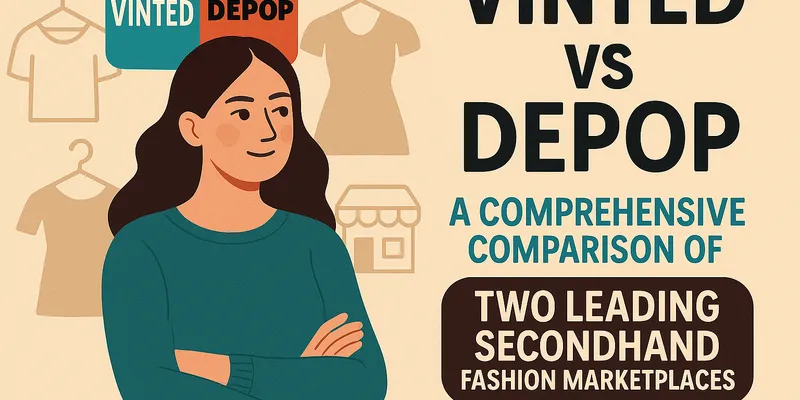In the rapidly growing world of sustainable fashion and circular economy, two platforms have emerged as dominant forces in the secondhand clothing marketplace: Vinted and Depop. While both serve the same fundamental purpose of connecting sellers with buyers for pre-loved items, they operate with distinctly different approaches, fee structures, and target audiences. Understanding these differences is crucial for anyone looking to buy or sell secondhand fashion online.
Platform Overview and Market Position
Vinted, founded in Lithuania in 2008, has established itself as Europe’s leading secondhand marketplace. The platform generated an impressive €813.4 million in revenue in 2024, representing a 36% increase from the previous year. With over 105 million registered users across 22 European countries, Vinted has positioned itself as the go-to platform for affordable secondhand shopping.
Depop, launched in 2011 and based in London, takes a more social media-inspired approach to secondhand selling. Owned by Etsy since 2021, Depop generated approximately $85 million in revenue in 2024 with 45 million registered users globally. The platform is particularly strong in the US, UK, and Australia markets.
Fee Structure: The Fundamental Difference
The most significant distinction between these platforms lies in their fee structures, which directly impacts seller profitability and buyer costs.
Vinted’s Buyer-Pays Model
Vinted operates on a unique zero seller fees model. Sellers keep 100% of their sale price, with all fees transferred to buyers through:
Buyer Protection Fee: 5% of item price plus a fixed amount of $0.70
Shipping costs: Paid entirely by buyers
This approach makes Vinted particularly attractive for casual sellers looking to declutter their wardrobes without losing money to platform commissions.
Depop’s Evolving Fee Structure
As of July 2024, Depop eliminated its traditional 10% seller fee for US and UK sellers. The new structure includes:
No seller fees for UK and US sellers on new listings (sellers outside these regions still pay 10%)
Payment processing fees: 3.3% + $0.45 for US sellers, 2.9% + £0.30 for UK sellers
Marketplace fee for buyers: Up to 5% + $1 fixed amount
Geographic Availability and Market Reach
Vinted’s European Dominance
Vinted operates in 22 European countries as of 2024, with recent expansions into Croatia, Greece, and Ireland. The platform’s primary markets include:
- France (largest market)
- United Kingdom
- Germany
- Italy
Depop’s Global Presence
Despite having fewer total markets, Depop has a stronger global presence, operating in key markets including:
- United States (major market)
- United Kingdom
- Australia
- Various other countries
Which Platform Should You Choose?
Choose Vinted If:
- You’re looking for budget-friendly options
- You want to sell items quickly without fees
- You prefer a straightforward, transaction-focused experience
- You’re based in Europe
- You’re selling everyday clothing rather than fashion statements
Choose Depop If:
- You’re interested in unique, vintage, or trendy items
- You want to build a fashion business or brand
- You enjoy the social aspects of online selling
- You’re comfortable with higher prices for quality items
- You’re in the US, UK, or Australia
The Future of Secondhand Fashion Marketplaces
Both platforms continue to evolve and expand their offerings. Vinted’s recent profitability and aggressive expansion into new categories and markets positions it well for continued growth in Europe. Meanwhile, Depop’s fee structure changes and strong brand recognition among younger demographics suggest a strategic pivot toward sustainable long-term growth.
The choice between Vinted and Depop ultimately depends on your specific needs, location, and approach to secondhand fashion. Vinted excels as a practical platform for affordable, everyday fashion needs, while Depop thrives as a creative marketplace for unique, curated fashion finds. Both platforms contribute significantly to the growing circular economy and sustainable fashion movement, offering consumers alternatives to fast fashion while enabling individuals to monetize their unwanted clothing items.

